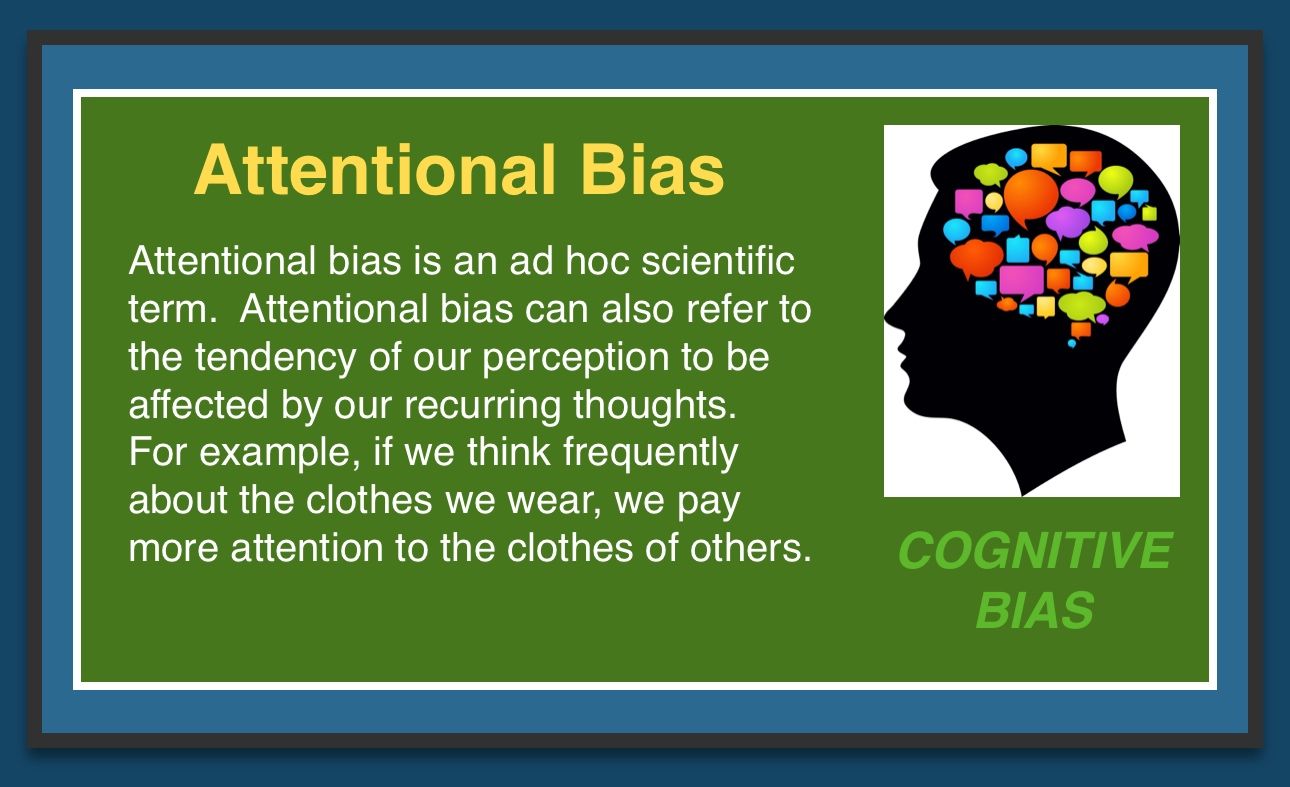Attentional bias is a cognitive bias that occurs when individuals selectively pay more attention to certain stimuli or information while neglecting others. This bias is often driven by personal preferences, emotions, or past experiences and can influence the way people perceive and react to the world around them.
Explanations:
Attentional bias is influenced by various factors, including emotional states, personal interests, and past experiences. People are naturally inclined to focus on what is personally relevant or engaging to them.
Examples:
Phobias: A person with a fear of spiders may constantly scan their surroundings for any sign of spiders, even when in an environment where spiders are unlikely to be present.
Confirmation Bias: Individuals seeking information that supports their existing beliefs and ignoring or dismissing conflicting information exhibit attentional bias.
Relationships: A person in a romantic relationship may be more attuned to signs of affection and care from their partner while overlooking or downplaying any negative behaviors.
Solutions:
Mindfulness: Develop mindfulness practices to become more aware of your attentional biases and consciously redirect your focus when necessary.
Balanced Perspective: Actively seek a balanced and well-rounded perspective by considering different viewpoints and sources of information.
Challenge Assumptions: Question your assumptions and beliefs to avoid reinforcing attentional bias that supports preexisting views.
Emotional Regulation: Learn to manage and regulate your emotions to reduce the impact of emotional biases on your attention.
Addressing attentional bias involves recognizing the impact of personal preferences and emotions on your focus and actively working to balance your perspective and reduce the influence of biased attention.
